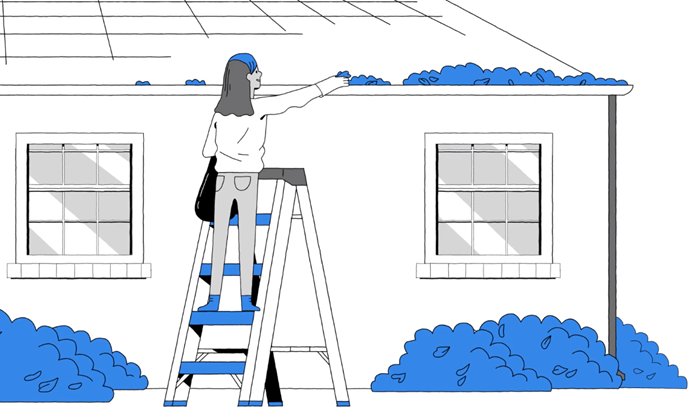BCAA Winter Plumbing Checklist:
Prevent flooding and leaks
Water leaks and flooding are nightmares that haunt us each winter as our homes are put through a gruelling test that can create many ways for water to seep in. Not only is it a hassle to deal with a burst pipe or flooded basement, water damage can lead to more severe problems including mold and rotting.
Keep your water worries at bay using these effective steps that will strengthen your home’s weak spots for leaks and flooding.
Keep pipes from freezing
So, what’s the big deal with frozen water in pipes? It can be a very big deal as frozen water expands and increases the pressure inside the pipe which can cause them to crack or burst, spilling water everywhere inside your home. Here are easy steps to help prevent pipes from freezing.
| 1. |
Turn off water supply to exterior faucets and drain pipes, and disconnect hoses and sprinklers. If the weather in your area gets extremely cold, cover outdoor faucets with an insulation kit. Follow these easy steps:
Step 1: Shut off water flow to outside faucets Step 2: Detach garden hoses and sprinklers Step 3: Turn faucet on in order to drain out leftover water, then turn it off |

| 2. |
Insulate exterior pipes and those exposed to cold temperatures. This includes pipes within exterior walls and unheated areas such as your crawlspace, attic and garage.
|
| 3. |
If possible, heat or insulate areas where pipes are located. Keeping doors to rooms and cabinets that have water supply in them open will also help expose plumbing to warmer air.
|
| 4. |
Know the location of your main water shut-off valve and how to turn it off. Make sure your family members know this, too. Test the valve to make sure it's working properly and label it with a tag.
|
| 5. |
Speak with your insurance advisor to check that you have adequate water damage coverage with your home insurance. Many insurance providers offer add-ons for water damage coverage. For example, BCAA Home Insurance offers extended water coverages such as: Extra Roof Leak Coverage and Outdoor Drain and Surface Water Coverage. |
Ensure proper water drainage
Blocked gutters and drains can force water to back up and soak into roofs, walls and even the foundation. Proper drainage is even more important considering the added water from rain, ice and snow during fall and winter months.

| 6. |
Make sure gutters are clean and unobstructed. At least once a year, physically remove debris and build-up from your gutters and ensure your downpipes are clear. In some cases, you may need to add a downspout to an existing gutter or connect an eavestrough downspout extension. Ensure that it extends at least 6 feet from foundation walls to prevent water from draining into your basement. Direct this towards the street.
|
| 7. | Ensure areas around external drains are clean and clear. Trim trees and bushes and clear your yard of lose tree branches and leaves so they don’t end up collecting around external drains and blocking them which can cause flooding. Check external drains regularly. |
| 8. |
If relevant, test your sump pump (used to remove water from the basement). Slowly pour several gallons of water into the sump pit to see whether the pump turns on. You should do this every few months, but especially after a long dry season or before a rainy one. If the pump doesn't operate, have it checked by a plumbing professional. |
| 9. |
Inspect the roof and replace raised or loose shingles. Also check for rust in the flashing around the chimney or vent pipes. Have a roof professional do a check-up if you don’t feel safe to do it yourself.
|







